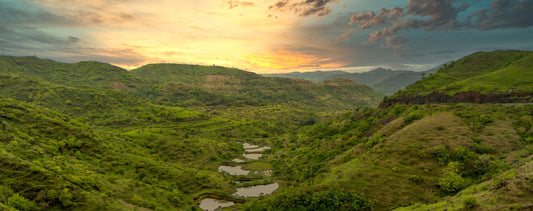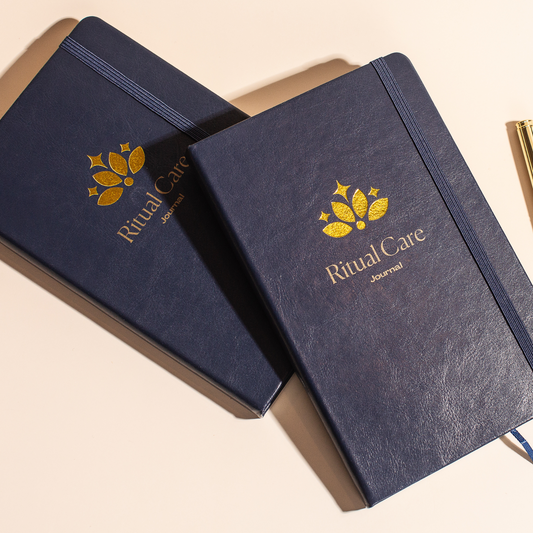"I dreamed I was a butterfly, flitting around in the sky; then I awoke. Now I wonder: Am I a man who dreamt of being a butterfly, or am I a butterfly dreaming that I am a man?" - Zhuangzi
Recently, a good friend and I were discussing the philosophy of one of our favorite films, The Matrix. For those who aren’t familiar with the movie, it’s a story about a computer hacker known as Neo, (played by Keanu Reeves) who comes to discover the world he lives in is an elaborate computer simulation designed to keep his consciousness (and that of the entire human race) imprisoned and docile. The real world is a post-apocalyptic wasteland in which the bodies of all those trapped in the matrix are used to produce energy for a race of malevolent machines.
It's a mind-bendingly fascinating story filled with incredible visuals, archetypal themes, and profound spiritual insights that has provided its fans with an endless supply of brain-candy for over 20 years.
In particular, my friend and I were considering a specific passage by Morpheus, a member of the resistance (played by Laurence Fishburne) who liberates Neo from the Matrix. He asks Neo, Have you ever had a dream, Neo, that you were so sure was real? What if you were unable to wake from that dream? How would you know the difference between the dream world and the real world?
My friend posed the question, “Well, how would you know?”
How would you know indeed?
Part of the reason I’ve always been drawn to The Matrix is that its philosophy is such a powerful allegory for the teachings of Vedanta. The Vedic literature describes the world we live in as Maya, a Sanskrit word commonly translated as illusion. It’s the construct of materialism, the physical world, and the false selves (egos) that we have identified ourselves with. Vedanta tells us that this is not the true nature of reality, but just a shadow of our deeper spiritual identity. In other words, the world we know is merely a dream, an artifice not unlike the matrix, that keeps us distracted from knowing what’s going on behind the curtain.
So, to get back to my friend’s question – if this world is illusory, or not the true reality, how can we tell? How can we wake up from the dream to glimpse the real world?
Despite the convincingly “real” nature of this world as reported back to us by our 5 senses, we can, on occasion, find a “glitch in the matrix” that permits a peek of the true reality, even if fleetingly. What follows are 10 tools or experiences that can help us see the non-local Self that lies hidden, just out of view. Think of them as gateways to shift your awareness into a more expanded state.
"Look deep into nature, and then you will understand everything better." - Albert Einstein
"Intimacy is a totally different dimension. It is allowing the other to come into you, to see you as you see yourself." - Osho
The dream world of Maya is an undoubtably convincing illusion. Yet, despite its apparent reality, these experiences reveal clues that things may not always be as they seem. Knowing that gateways for awakening are inherent in the system, it’s up to us to harness them as opportunities for our spiritual evolution.
Discover your life's purpose and find freedom in releasing your dharma to the Divine in You and Your Dharma, a four-part series with Devi Brown, available now in the Chopra App.
Recently, a good friend and I were discussing the philosophy of one of our favorite films, The Matrix. For those who aren’t familiar with the movie, it’s a story about a computer hacker known as Neo, (played by Keanu Reeves) who comes to discover the world he lives in is an elaborate computer simulation designed to keep his consciousness (and that of the entire human race) imprisoned and docile. The real world is a post-apocalyptic wasteland in which the bodies of all those trapped in the matrix are used to produce energy for a race of malevolent machines.
It's a mind-bendingly fascinating story filled with incredible visuals, archetypal themes, and profound spiritual insights that has provided its fans with an endless supply of brain-candy for over 20 years.
In particular, my friend and I were considering a specific passage by Morpheus, a member of the resistance (played by Laurence Fishburne) who liberates Neo from the Matrix. He asks Neo, Have you ever had a dream, Neo, that you were so sure was real? What if you were unable to wake from that dream? How would you know the difference between the dream world and the real world?
My friend posed the question, “Well, how would you know?”
How would you know indeed?
Part of the reason I’ve always been drawn to The Matrix is that its philosophy is such a powerful allegory for the teachings of Vedanta. The Vedic literature describes the world we live in as Maya, a Sanskrit word commonly translated as illusion. It’s the construct of materialism, the physical world, and the false selves (egos) that we have identified ourselves with. Vedanta tells us that this is not the true nature of reality, but just a shadow of our deeper spiritual identity. In other words, the world we know is merely a dream, an artifice not unlike the matrix, that keeps us distracted from knowing what’s going on behind the curtain.
So, to get back to my friend’s question – if this world is illusory, or not the true reality, how can we tell? How can we wake up from the dream to glimpse the real world?
Despite the convincingly “real” nature of this world as reported back to us by our 5 senses, we can, on occasion, find a “glitch in the matrix” that permits a peek of the true reality, even if fleetingly. What follows are 10 tools or experiences that can help us see the non-local Self that lies hidden, just out of view. Think of them as gateways to shift your awareness into a more expanded state.
- Meditation. Meditation is quite possibly the ultimate tool for perceiving the true nature of reality. As the mind settles into increasingly deeper levels of stillness, a profound sense of clarity begins to emerge. Our perceptions expand, our senses become more refined, and our subtle energy more consolidated and coherent. In this stillness, the hard boundary of the external world seems progressively softer and more transparent. With regular practice, we sense a much vaster truth beyond the shroud of the material world.
"You do not need to leave your room. Remain sitting at your table and listen. Do not even listen, simply wait, be quiet, still and solitary. The world will freely offer itself to you to be unmasked, it has no choice, it will roll in ecstasy at your feet." - Franz Kafka
- Silence. Spending time in silence similarly allows the mind to settle, but by additionally abstaining from conversations, reading, watching TV, or listening to music, a profound calm begins to draw us into the still and quiet womb of the universe. Without the object-reference of verbal communication, the ego personality is absorbed into the field of pure consciousness. The artificial boundary of the ego falls away and we experience the world directly. Additionally, in that silence, our hearing grows sharper, often allowing us to perceive the subtler vibrations of the universe that are normally washed out by the noise of daily life.
- Time in Nature. The natural world is an environment rich in diverse life forms, breathtaking scenery, life force energy (prana), and the interplay of natural laws. The natural world has a direct connection to the source code of the universe unobstructed by ego concerns, deadlines, melodrama, anxieties, guilt, or regrets. The natural world exists 100% in the judgement-free present moment and the more time you spend in nature, the more deeply you lose track of time and experience the infinite creative intelligence of the universe.
"Look deep into nature, and then you will understand everything better." - Albert Einstein
- Music Absorption. Losing oneself in a piece of music can be an incredibly transcendent experience. The combination of vibration, pitch, rhythm, and harmony create a profoundly entraining effect on body, mind, and spirit. The power of music is primordial in nature with its roots sunk deep into the evolutionary history of the human species. We feel this timeless universal connection when we are deeply moved by music, so much so that we may even have a physical reaction called frisson – the sensation of chills or goosebumps caused by a piece of music. Experiencing a powerful piece of music melts the boundaries of the external world and lets us literally feel the expansion of our consciousness into the non-local domain of awareness.
- Exercise. Our bodies are designed to move, and when we move them with intention and vigor, we generate energy and vitality. In addition to the physical benefits of exercise, it also releases endorphins that decrease stress, increase pain tolerance, enhance mood, and create a feeling of well-being. This feeling of vibrant energy and health following exercise is often accompanied by a sensation of centered calm and heightened awareness. We feel our bodies temporarily merge into the body of the cosmos and we may even perceive a sense of unity with all things and beings.
- Deep Breathing. The world’s wisdom traditions are keen to note the correlation between breath and spirit. Some go deeper to prescribe specific breathing exercises to enhance or manage the flow of subtle energy through the mind and body. Whether it’s a breathing meditation, Yoga Pranayama, Qi Gong exercises, or some more advanced practices, deep controlled breathing exercised often have an awareness expanding effect in which the mind goes quiet, our senses feel heightened, and the interconnectedness of the world seems undeniably clear.
- Intimacy. Relationship is a mirror of the soul. When we can be our true selves in the presence of another, either emotionally, physically, or spiritually, we can see ourselves reflected in our partner, spouse, or beloved. We’re also able to feel secure in our vulnerability, letting our guard down and being unapologetically authentic and genuine. In this intimacy, we feel complete oneness with another. This intimacy dissolves the illusion of separation, allowing us to grasp the unity of the universe.
"Intimacy is a totally different dimension. It is allowing the other to come into you, to see you as you see yourself." - Osho
- Driving. There can be a hidden magic behind the wheel – perhaps it’s the rhythmic patter of the tires on the pavement, the scenery passing us by, or the sense of motion and momentum moving us forward. Regardless, a silent, mindful drive (or possibly coupled with the experience of music mentioned earlier) can create a powerfully meditative experience. Not meditative in the deeply relaxed sense, but in a fully-present and engaged manner. As K.T. Berger says in his book Zen Driving, “In driving there is an unbroken but discontinuous stream of moments and experience and awareness – in that no moment, like no snowflake, is like any other.” In this way, our automobile becomes the literal vehicle for our awakening.
- Inductive Thinking and Reason. In Vedanta one of the four traditional paths to union is known as Gyan Yoga, or the yoga of understanding, knowledge, and science. Rather than being an enemy of spiritual awakening, reason and a keen intellect can be our allies in uncovering the mysteries of the universe, both within and without. Whether through pattern recognition, inferring how the laws of nature are structured, or ruminating and hypothesizing on the attributes of consciousness itself, the yoga of understanding uses the mind to go beyond the mind and gain deep insight into the true nature of reality.
- Intuitive Knowing. Intuition is perceiving things directly and immediately, independent of intellectual reasoning. It is “feeling” or sensing what is true rather than arriving at a conclusion through the rational mind. Intuition is a cosmic download that oftentimes arrives in the form of a spontaneous insight or a knowingness that bypasses the thinking mind entirely; we suddenly know something to be. This moment of insight is a powerful reminder of our true nature as pure awareness. Like synchronicities, intuition is the soul’s way of sending a non-local message to us through the matrix of Maya – reminding us of who we really are.
The dream world of Maya is an undoubtably convincing illusion. Yet, despite its apparent reality, these experiences reveal clues that things may not always be as they seem. Knowing that gateways for awakening are inherent in the system, it’s up to us to harness them as opportunities for our spiritual evolution.
Discover your life's purpose and find freedom in releasing your dharma to the Divine in You and Your Dharma, a four-part series with Devi Brown, available now in the Chopra App.






















